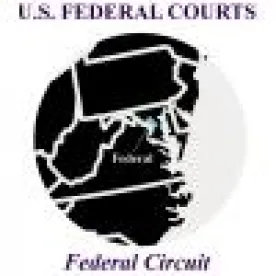On March 31, 2021, Neapco Holdings LLC filed its Brief in Opposition to American Axle’s Petition for Cert. If you need a refresher on the proceedings to date, please read (or re-read) the analyses I posted on Jan. 11, 2021 and on August 3, 10, 11 and 14 of 2020. The claims on appeal recite a method for manufacturing a shaft assembly of a driveline system by providing a hollow shaft member [the driveshaft, as for a car or truck], tuning a mass and a stiffness of at least one liner; and inserting the … liner into the shaft member; wherein the … liner is a tuned resistive absorber to attenuating shell mode vibrations and wherein the … line is a tuned reactive absorber for attenuating bending mode vibrations.
Neapco was successful in convincing the Fed. Cir. panel that this claim was directed to Hooke’s Law and contained no further inventive concept. As summarized by Neapco, arguing that the Fed. Cir. ruling was “fact-bound and narrow”:
“American Axle’s [AA] claim 22 recites a process for achieving a desired result by reference solely to the natural law, and nothing else, to accomplish the desired result.” Neapco describes “technical admissions from AA’s witnesses, including that tuning the liner is accomplished strictly by adjusting its mass and stiffness.” I wish that AA had emphasized that Hooke’s Law per se is not concerned with damping frequencies of tuned liners, but that the mathematical equations for determining how Hooke’s Law is related to tuned liners are complex. Wiki “Hooke’s Law” if you think the claims simply require application of Hooke’s Law. Fs = kx looks simple, but I would have liked AA or Neapco to explain how two vibration damping modes can be derived from this law of nature which, in its simplest form, described the behavior of helical springs.
Apart from the hazy science, Neapco argues that “[AA] did not discover the use of a liner in a propshaft to reduce vibration … AA sought to obtain the broadest claims possible by reciting the use of known propshaft liners with reference to a known natural law an engineer must consider when trying to dampen vibration.” But isn’t this an obviousness argument? Neapco stumbles in trying to distinguish Diehr, which also involved essentially mechano-physical laws:
“The claim in Diehr required numerous transformative steps: ‘installing rubber in a press, closing the mold, constantly determining the temperature of the mold, constantly recalculating the appropriate cure time though the use of a formula and a digital computer, and automatically opening the press at the proper time.’”
But all this is, is the use of an algorithm to control heat curing of rubber to make a tire. The natural law in question is the heat-driven reactions that lead to a finished tire. In this case, the existence of Hooke’s Law makes it possible to make a modified propshaft by combining a tuned liner with a hollow shaft, so that the shaft’s undesirable vibrations are dampened. Neither cases are simple “apply [the natural law] by any means necessary to achieve a desired result.” Both processes have specific, tangible results. Remember that earlier in the Brief Neapco argued that this was a narrow fact-bound case.
Judge Chen is quoted as saying that “a claim may be held ineligible if it invokes a natural law to achieve some desired result without reciting any further limitations as to the means for accomplishing that result” and so O’Reilly cannot be distinguished. But isn’t the use of a tuned liner a concrete means to attain the desired result? Again, Chen states that “[k]ey to the majority’s analysis were the admissions of AA’s own witnesses, who admitted that Hooke’s Law relates the mass, stiffness, and frequency of an object.” Neither the district court nor the Fed. Cir. set forth any explanation of how the effect of the liner was governed by Hooke’s Law, particularly if the starting point is Fs =kx (Fs does not stand for frequency and x is the distance a spring is displaced, while k can stand for spring stiffness.)
Neapco also argues that most s. 101 cases that reach the Fed. Cir. are software or life sciences cases while only 1% involved other industries—“Like AA’s patent here.” The counter argument is simply that pushing the patent ineligibility of a mechanical device is akin to letting the camel put his nose in the s. 101 tent. Neapco quotes Judge Lourie as writing that the current state of the law is consistent – but he was referring to the patent-ineligibility of diagnostic methods and the patent eligibility of methods of treatment and methods of processing natural products, not to any consistency of application of s.101 to invalidate classic mechanical processes. He also voted to rehear this appeal en banc. Well that ship has sailed and a new choir of s. 101 sirens has arisen to lure unwary patent attorneys onto the rocks of invalidity. S.O.S.


 />i
/>i

